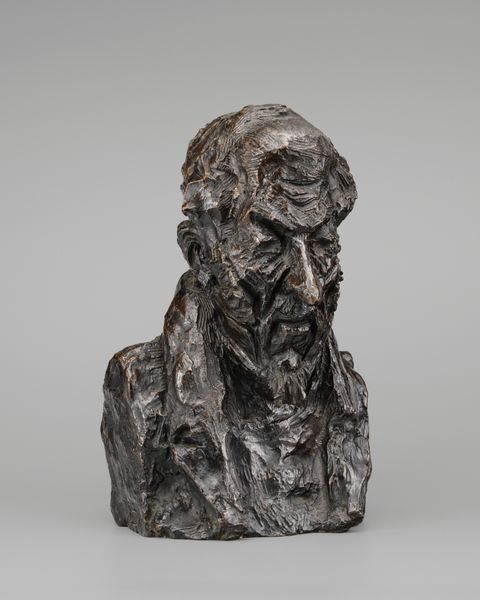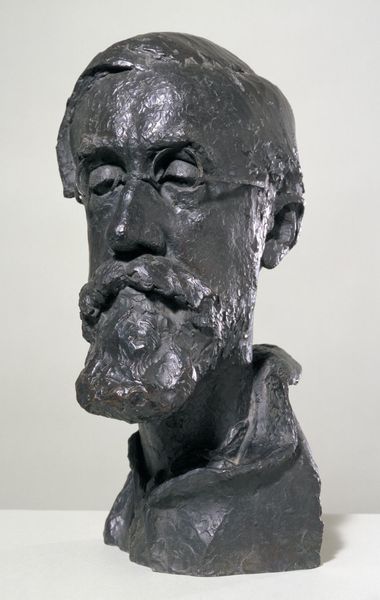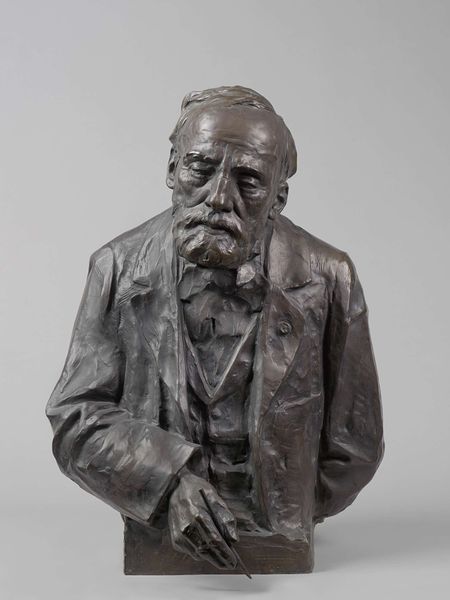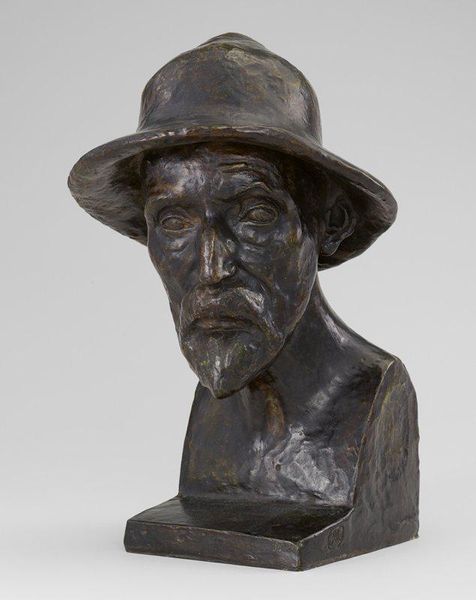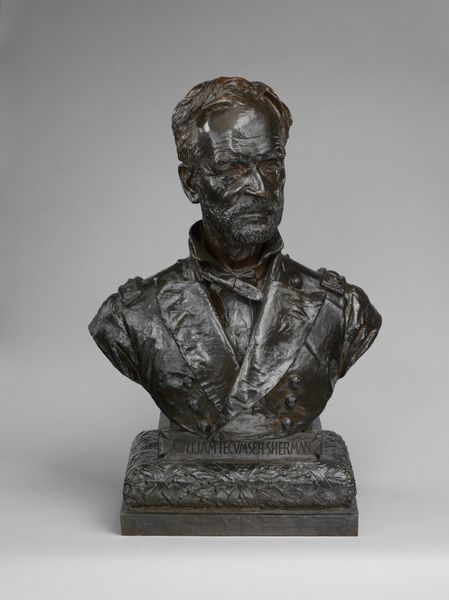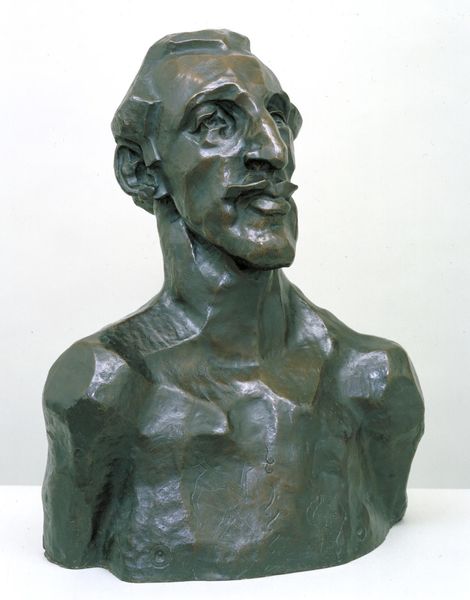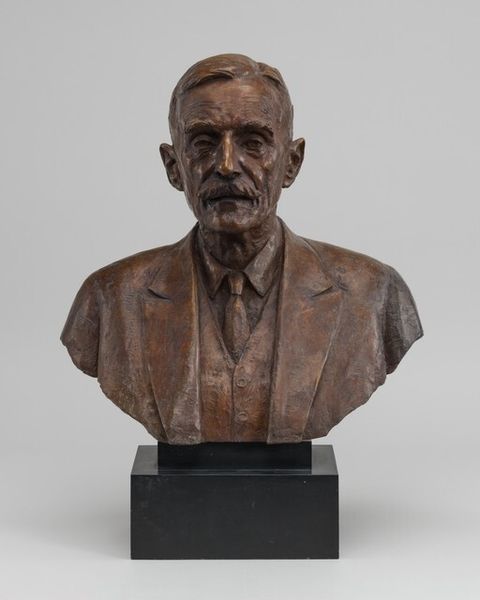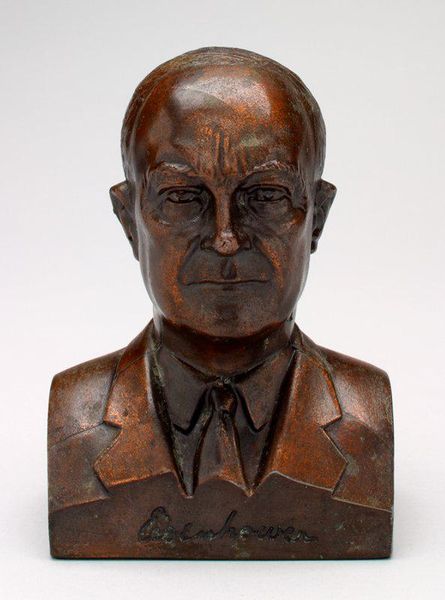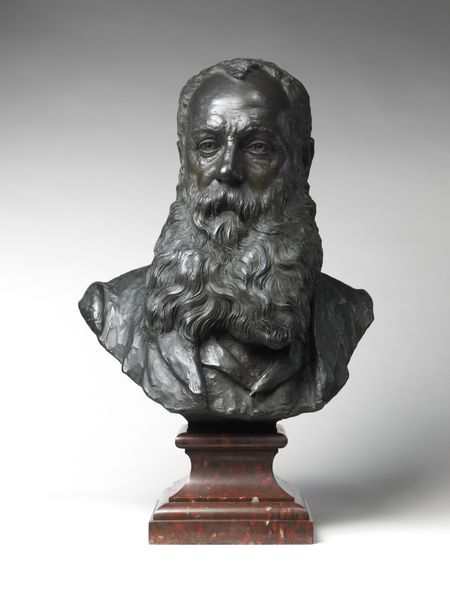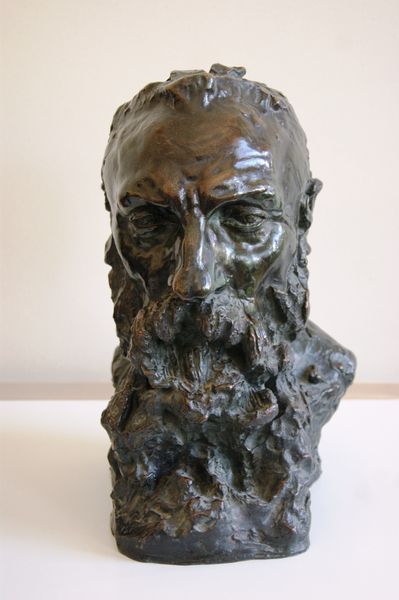
Dimensions: object: 594 x 365 x 267 mm
Copyright: CC-BY-NC-ND 4.0 DEED, Photo: Tate
Curator: This is Paul Troubetzkoy's sculpture of George Bernard Shaw, currently held in the Tate Britain. Editor: It’s somber, isn't it? The texture of the material seems rough, almost unfinished, giving Shaw a very serious, contemplative presence. Curator: The rough texture is quite deliberate, characteristic of Troubetzkoy's impressionistic approach to sculpture. Note how the play of light and shadow across the surface defines the form. Editor: Shaw, the famed playwright and socialist, was a complex figure who used his wit to challenge societal norms. This bust reflects that tension, between his public persona and perhaps a more private, thoughtful self. Curator: Indeed. The artist captured not just a likeness, but also an essence. The sculpture encapsulates Shaw's intellectual energy. Editor: It makes you wonder what Shaw himself would have thought of it, knowing how critical he was of artistic and social conventions. Curator: A fascinating intersection of artist and subject. Editor: Absolutely, a study in contrasts.
Comments
tatebritain 8 months ago
⋮
http://www.tate.org.uk/art/artworks/troubetzkoy-george-bernard-shaw-n04274
Join the conversation
Join millions of artists and users on Artera today and experience the ultimate creative platform.
tatebritain 8 months ago
⋮
Prince Paul Troubetzkoy was an Italian born painter and sculptor, the son of a member of the Russian nobility. He made many portrait busts of famous men, such as Tolstoy and Anatole France. Shaw (1856-1950), the famous playwright and Fabian socialist, was a devoted vegetarian like Troubetzkoy. They were friends and Shaw sat to Troubetzkoy three times. The first was for a portrait bust in 1908, executed in three hours in a studio in London. Then, in 1926, at Troubetzkoy's studio at Lago Maggiore in Italy, Shaw posed for a life-size statue, a statuette showing him seated, and this second portrait bust. Gallery label, August 2004

